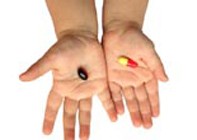Peer Reviewed
Feature Article Pharmacology and therapeutics
Prescribing psychotropic medication in children and adolescents
Abstract
Psychotropic medications are a useful tool to decrease distress and improve functioning in children and adolescents who have psychiatric disorders. Such medications are safe and effective provided clinicians follow good prescribing practice.
Key Points
- There are nonpharmacological options for most children and adolescents with psychiatric disorders or problems.
- Pharmacological treatment of uncomplicated obsessive compulsive disorder, anxiety and tic disorders can be undertaken by GPs who fully understand the treatment options and side effects; however, other more complex or controversial disorders are better managed by specialist services.
- When treating a child or adolescent for a psychiatric disorder, the doses recommended in this article should be followed; however, in patients who have a poor treatment response, doses in the upper range may be necessary.
- An adequate trial of the drug, in adjusting and scheduling of doses, should be given before considering a change in treatment.
- Growth parameters should be routinely monitored when following up patients who have been prescribed psychotropic medication.
- If treatment response is inadequate, adherence to therapy should be monitored before increasing the medication dose. If multiple medications seem necessary, a specialist review should be sought.
- In patients who are stopping therapy, it can be necessary, particularly with some medication, to taper the doses to avoid the development of a discontinuation syndrome.
Purchase the PDF version of this article
Already a subscriber? Login here.

